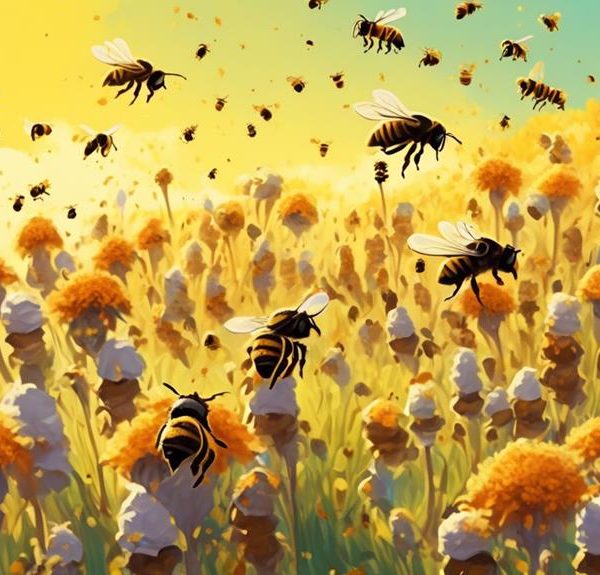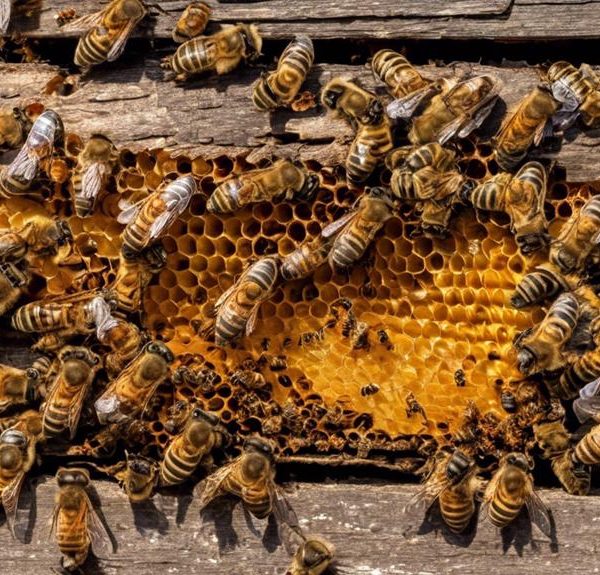Perfecting your homemade soap: discover the ideal amount of beeswax to add for a moisturizing, gentle cleanse, and the pitfalls of getting it wrong.

How Much Beeswax to Add to Soap?
Did you know that nearly 75% of homemade soaps contain some form of beeswax? You're probably wondering why it's such a popular ingredient.
Well, it's because beeswax naturally moisturizes and protects the skin, and it also adds a pleasant, honey-like scent.
However, the amount of beeswax to add in soap making is a delicate balance – too little may not provide the desired benefits, while too much can make the soap overly hard and difficult to lather.
So, how do you strike the right balance? Stick around, we're about to explore this fascinating aspect of soap making.
Key Takeaways
- Beeswax in soap provides moisturizing and protective benefits for the skin.
- The quantity of beeswax used in soap can be adjusted based on the desired hardness, texture, and lathering quality.
- It is important to find quality beeswax that has a natural color, scent, and texture.
- Troubleshooting soap issues related to beeswax can often be resolved by adjusting the beeswax ratio.
Understanding the Role of Beeswax
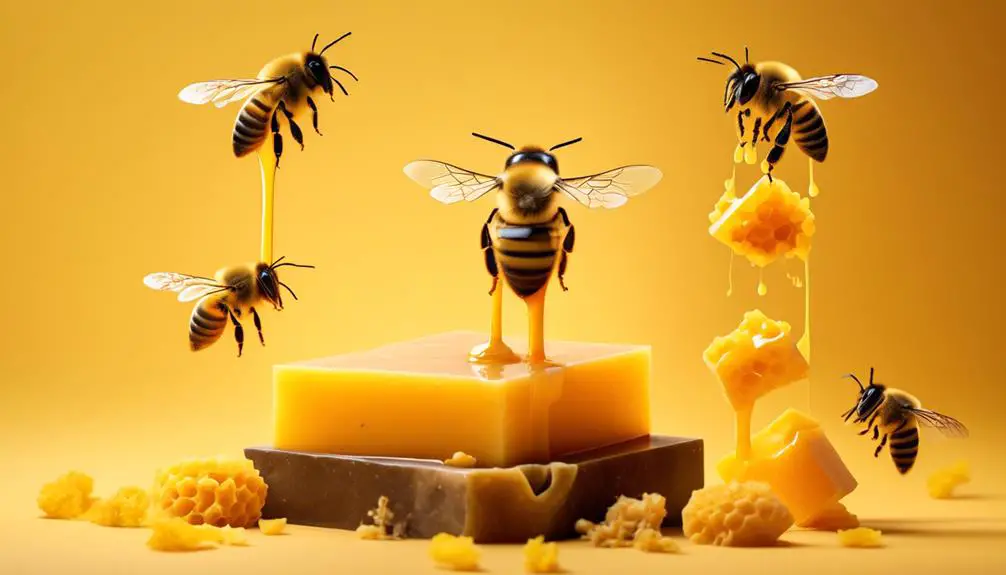
Often, you'll find beeswax as a key ingredient in soap recipes because it not only adds hardness and longevity to your homemade soaps, but it also contributes a subtle, natural scent and a luxurious feel on the skin. Beeswax is a product of the honeybee, renowned for its versatility. It's a natural emulsifier, enabling you to blend oils and water seamlessly into your soap. This is important for maintaining the soap's texture and consistency.
Beeswax also has an impressive moisture-locking property. It forms a protective barrier on the skin, trapping moisture in, while still allowing it to breathe. This makes beeswax-infused soaps extraordinarily moisturizing, a real treat for dry or sensitive skin types.
However, you need to be careful. Too much beeswax can make your soap less lathery. A general rule is to use no more than 1 to 2% of your oil weight in beeswax. For example, if you're using 1000 grams of oil, you'd use at most 20 grams of beeswax. Remember, it's about finding the right balance to reap the benefits of beeswax, without compromising other soap qualities.
Choosing Quality Beeswax

When you're on the hunt for beeswax to add to your soap, it's crucial to look for high-quality options. Don't be tempted by the low-cost alternatives that might float around; they often have impurities and won't provide the same benefits as high-quality beeswax.
Firstly, always check the color. Quality beeswax ranges from golden yellow to deep amber, depending on the flowers the bees have been feeding on. Pale or bleached beeswax may lack the natural properties that add value to your soap.
Secondly, opt for beeswax that smells faintly of honey. A strong, artificial scent could indicate the addition of synthetic fragrances, which you don't want in your soap.
Lastly, consider its texture. Quality beeswax should feel smooth and not crumbly.
Beeswax Quantity for Different Soaps
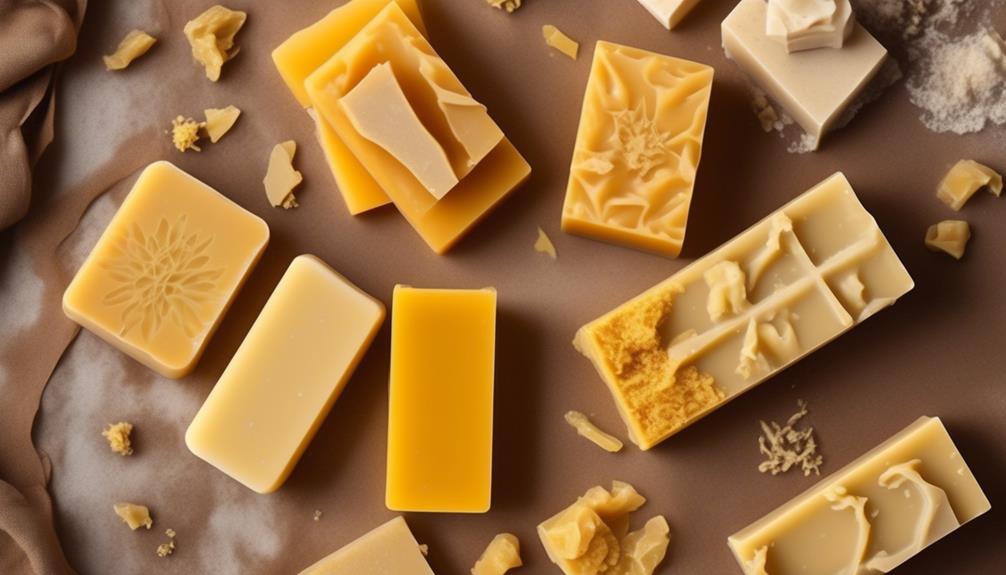
Having selected the best beeswax for your soap-making project, it's time to determine the right quantity to use for different types of soaps. The quantity of beeswax you'll need can vary depending on the type of soap you're crafting.
For a standard bar soap, a common guideline is to use between 1 to 3% of beeswax relative to the weight of the soap's oils. This is because you want the beeswax to harden the soap without making it overly brittle or reducing its lathering ability.
If you're making a more luxurious moisturizing soap, you might want to increase the beeswax content up to 5%. This will give your soap a creamier lather, while also providing a protective barrier on the skin that helps to lock in moisture.
In contrast, if you're creating a soap scrub with exfoliating properties, a lower amount of beeswax, around 1%, would suffice. You don't want the beeswax to interfere with the gritty texture that's typical of a scrub soap.
Adjusting Beeswax Measurements
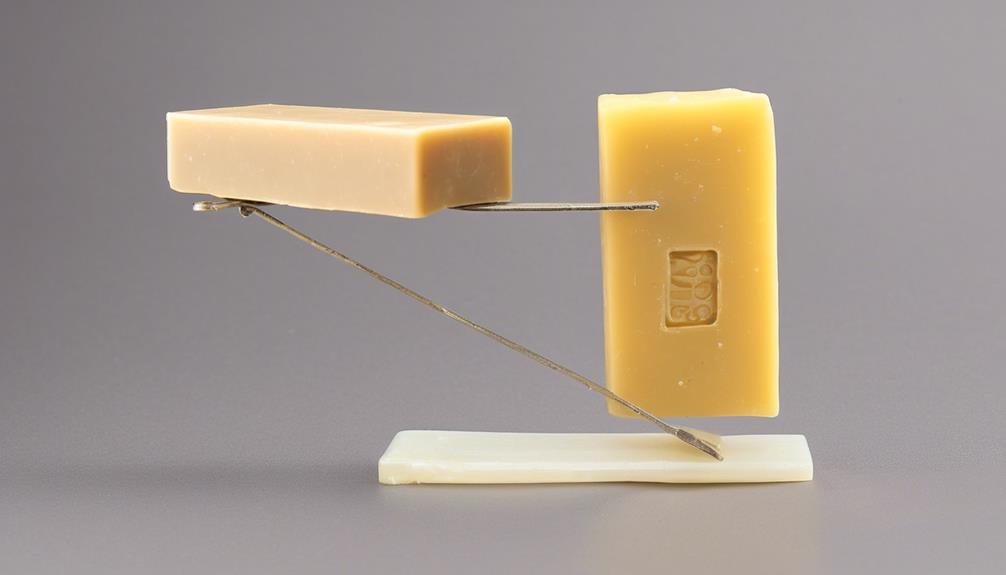
As you delve into soap-making, you'll find it's crucial to adjust your beeswax measurements based on the type of soap you're aiming to create. You may wonder why. Well, it's because the quantity of beeswax impacts the hardness, texture, and lathering quality of your soap.
For a hard bar soap, you'll want to use more beeswax. This will create a soap that's durable, long-lasting and offers a creamy lather. Generally speaking, for a 1 lb batch of soap, you'll need about 1.5 to 2 ounces of beeswax. However, don't go beyond 2 ounces as it could make your soap too hard and less lathering.
If you're crafting a softer, more luxurious soap, scale back on the beeswax. A small amount, say 0.5 to 1 ounce per 1 lb batch, will yield a soap that's rich, smooth, and moisturizing.
But remember, these are just guidelines. You'll need to experiment and adjust quantities according to your personal preference. Always note down your measurements, so you can tweak your formula to perfection. It's a process of trial and error, but with patience, you'll master the art of soap-making.
Troubleshooting Beeswax Soap Issues

Despite your best efforts, you might encounter some issues while making beeswax soap, but don't worry – there are solutions for most problems.
One common issue is the soap not setting properly. This often happens if you've added too much beeswax. If you find your soap is too soft or isn't setting, try reducing the quantity of beeswax in your next batch. Conversely, if your soap is too hard or brittle, you may not have added enough beeswax. Adjusting the beeswax ratio can often resolve these texture issues.
Another problem you might face is the soap developing a chalky or white layer on top. This is often due to the soap cooling too quickly. To prevent this, cover the soap immediately after pouring it into the mold and let it cool slowly.
Lastly, if your soap isn't lathering well, this could be due to a lack of coconut or palm oil in your recipe. Beeswax doesn't lather well on its own, so make sure to include these oils to achieve a good lather.
Frequently Asked Questions
What Are Some Alternatives to Beeswax in Soap Making?
You're asking about alternatives to beeswax in soap making. There's quite a few you can use!
Soy wax is a popular choice, being both affordable and easy to work with.
Carnauba wax, derived from palm leaves, is another good option. It's vegan and has a higher melting point than beeswax.
Other alternatives include candelilla wax and paraffin wax.
How Does the Addition of Beeswax Affect the Soap's Shelf Life?
Adding beeswax to your soap can significantly enhance its shelf life. Beeswax has natural preservative properties that help soap last longer. It's also a hardening agent, so your bars won't get mushy over time. You'll notice your soaps maintain their shape and scent much better.
However, be careful not to add too much. Around 1-3% of your soap's total weight is a good guideline to follow.
Is Beeswax Soap Safe for All Skin Types?
Yes, beeswax soap is generally safe for all skin types. You'll find it's particularly good for dry or sensitive skin, as it's a natural humectant that helps to retain moisture.
But remember, everyone's skin is unique. Just because it's natural, doesn't mean you won't have an allergic reaction. So, always do a patch test first. If you don't notice any adverse reactions, you're good to go.
Enjoy the benefits of your beeswax soap!
How Does the Scent of Beeswax Influence the Overall Fragrance of the Soap?
The scent of beeswax subtly influences the overall fragrance of your soap. It's got a natural, sweet smell that's not overpowering, so it doesn't compete with other scents you're using. Instead, it subtly enhances them, adding a warm, honey-like undertone.
You can experiment with different essential oils to complement the beeswax's aroma, creating a truly personalized scent experience. Remember, it's your creation, so enjoy the process and follow your nose!
What Are the Environmental Impacts of Using Beeswax in Soap Production?
You're considering the environmental impacts of using beeswax in soap production. Beeswax is actually a sustainable product. It's naturally produced by bees and doesn't require deforestation or harmful mining practices.
However, it's crucial to source it responsibly. Overharvesting can stress bee populations. So, while it's an eco-friendly option, you've got to ensure it's harvested sustainably.
In the end, your soap's eco-footprint depends on your supply chain's integrity.
Conclusion
So, you've learned how beeswax can enhance your soap.
What quality to look for, and how much to add.
With this guide, you can adjust quantities as needed and troubleshoot any issues.
Remember, it's all about experimenting to find the right balance for your soap.
With patience and practice, you'll master the art of incorporating beeswax into your soap-making process.
Creating a product that's not only beautiful but beneficial too.
Happy soap-making!

